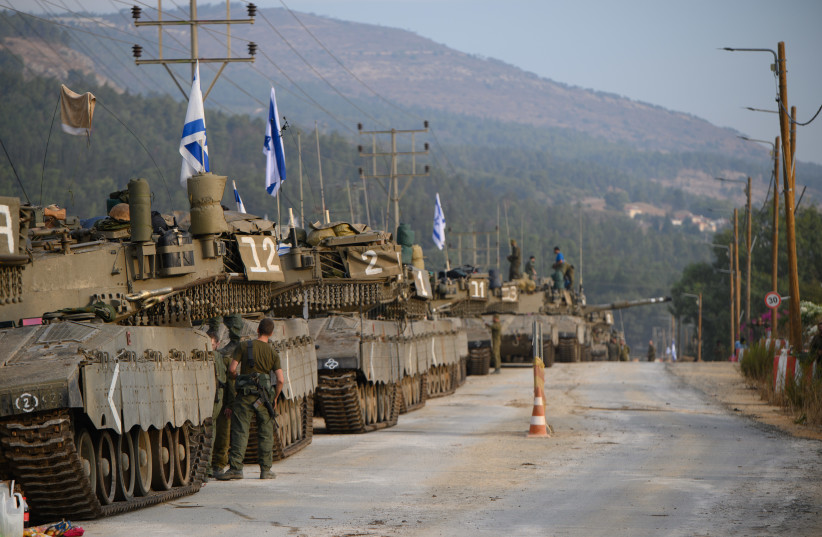Kiryat Shmona came under rocket fire on Thursday from Hamas forces in Lebanon to the north. Out of the 30 rockets launched at it, one moderately wounded two people, a father and his daughter. The sounds of artillery fire could be heard across the city.
Located just 3 km. from Lebanon, Kiryat Shmona is the latest war front, and it feels deserted. As darkness fell towards the evening, only a handful of cars could be seen on the street; restaurants and businesses were closed. Like many areas across the country, it has become a ghost town lost to war.
On Thursday, I drove up to the northern border to traverse the 28 towns that Israel evacuated amid threats from Hezbollah and Hamas. Many of these border areas have been threatened by anti-tank missiles, rockets, mortars, and light arms fire.
In Shtula, a van sat on the side of the road, its engine blown out, a victim of anti-tank fire. Damage was also sustained by a building under construction. On Sunday, one person was killed and several were wounded in an aerial attack.
The security team of this small community is varied, made up of young and old, some of them veterans of wars past. Haim Eliyahu lived in Shtula since he was a kid. His father had immigrated there from the Kurdistan region of Iraq in the 1950s.

They lived first in El-Kosh in the northern Galilee, moving after to these hills on the northern border in 1969. They were so close to Lebanon that residents were able to walk over and buy food from the Lebanese villages. The border was not like it is today back then. There was no fence and no terror army on the other side. Eliyahu said they used to play soccer together.
In the 1970s, the PLO, ejected from Jordan, arrived across the border and began executing attacks. They tried to massacre people in the Galilee in those days – a forerunner to Hamas’s attacks. Back then, border communities were armed. Later, after the 1982 invasion of Lebanon, the border was again open, until 2000, when Hezbollah took power in the hills in Lebanon.
Northern Israel is armed
Today, northern Israel is an armed camp. With 300,000 reservists called up, many areas are festooned with tanks, soldiers, camps, and military vehicles on the move, with temporary concrete shelters being delivered.
Once tourist hotspots today stand deserted. Rosh Hanikra, a beautiful ocean overlook, is empty of visitors; Achziv beach has no swimmers; only soldiers can be seen on many roads; roadblocks are everywhere. As in the South, tens of thousands of residents have been evacuated. Civilian volunteer networks have sprung up to help with the facilities and deliver food to security forces and locals. This is how chickens in places like Shtula are surviving without their owners; how the cows get fed and milked.
An IDF officer assured that his soldiers were ready, prepared for any eventuality, and that morale is high. This was evident from the soldiers traversing the pretty meandering roads.
Yet the threat of rockets and anti-tank missiles is always present. Roads that run too close to the border are closed, as sirens rang above towns and Israel carried out retaliatory strikes.
However, the hills seem to obscure the war, swaddled in winter clouds and rain. It is quiet. If it were not for the large metallic beasts, the tanks, sitting here and there, it would be a perfectly peaceful fall day.
On the way to Kiryat Shmona, traffic was stopped due to rocket fire, halting the movement of army vehicles, police, and locals. Old M113 APCs, that the army still uses, were driving along as well, waiting for the all clear to proceed. Like everyone else, they were waiting. Waiting for what comes next – for the next phase of this war.
